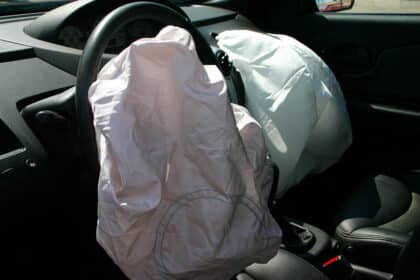 Photo: The News Wheel
Photo: The News Wheel
Turbochargers have become exponentially more common among today’s vehicles. Even some pickup trucks are using turbochargers to milk more performance out of four-cylinder engines! With the increased prevalence of turbo engines, you probably have one in your vehicle. That’s why it’s important to learn how to preserve and service a turbocharger to extend its life.
What’s the Difference Between a Turbocharger and a Supercharger? Find out here!
Clean oil is crucial for a turbocharged engine, especially if it’s an older oil-cooled unit. The system needs to stay well-lubricated and depends heavily on clean oil to function properly, so don’t neglect regular oil changes.
Get an oil change at least every 5,000 miles — more often, if possible. Treat it like a high-mileage or severe performance interval. Missed oil changes will quickly ruin a turbocharger.
The quality of oil matters, too. High-quality synthetic oil is worth the investment for a turbocharged engine because its higher burning temperature gives it better viscosity and stability. That will improve the performance and longevity of the turbocharger. And keep an eye on the oil level in case it depletes, which can happen on turbocharged motors.
It can be tempting to postpone addressing a check engine light or oil warning light when you see it, but procrastination can be a death sentence for your turbocharger. Address any unusual noises, performance hiccups, or failing components immediately before they impact the turbocharger. This can include the oxygen sensor, water pump, intercooler, spark plugs, and such.
Keep the engine and its connected systems in tip-top shape. Perform regular coolant flushes, mend the intercooler, install new engine air filters often, and schedule carbon cleanings (especially if it’s a GDI Turbo engine!).
Pro tip: Don’t put the pedal to the metal immediately after starting the engine if your car has a turbocharger. This is a fast way to do permanent damage to it. Otherwise, the motor oil will still be thick, the oil pump will falter, and it won’t lubricate sufficiently when the turbocharger kicks in and starts blowing at high speeds.
Ease into using the engine at a high level, giving it a few minutes to warm up and reach full oil pressure before shifting into drive — especially on cold days. Then, if possible, wait 10-15 minutes before flooring it onto the highway.
 Photo: The News Wheel
Photo: The News Wheel
In general, remember that turbocharged cars aren’t necessarily sports cars. Turbo motors are made to provide more efficient daily driving, not for high-torque street racing. The less strain you put on the motor, the better it is for the turbocharger’s condition.
For instance, if your car also has a manual transmission, shift into a lower gear when possible when climbing inclines This keeps it within its most effective power band and minimizes the need for boosts or downshifts. Also, rely on cruise control as much as possible instead of constantly changing speeds.
Turbochargers generate a lot of heat, especially when you’ve been pushing the engine hard. Let the engine rest for a minute or two after you shift into park before turning off the engine. This lets the turbocharger wind down and the oil circulate before trapping it in places where it could clog as it cools.
This forced induction system achieves performance wonders but also creates a lot of heated pressure that’s prone to breaking. Keep your car running safely by caring for its turbocharger.
Aaron is unashamed to be a native Clevelander and the proud driver of a Hyundai Veloster Turbo (which recently replaced his 1995 Saturn SC-2). He gleefully utilizes his background in theater, literature, and communication to dramatically recite his own articles to nearby youth. Mr. Widmar happily resides in Dayton, Ohio with his magnificent wife, Vicki, but is often on the road with her exploring new destinations. Aaron has high aspirations for his writing career but often gets distracted pondering the profound nature of the human condition and forgets what he was writing… See more articles by Aaron.









